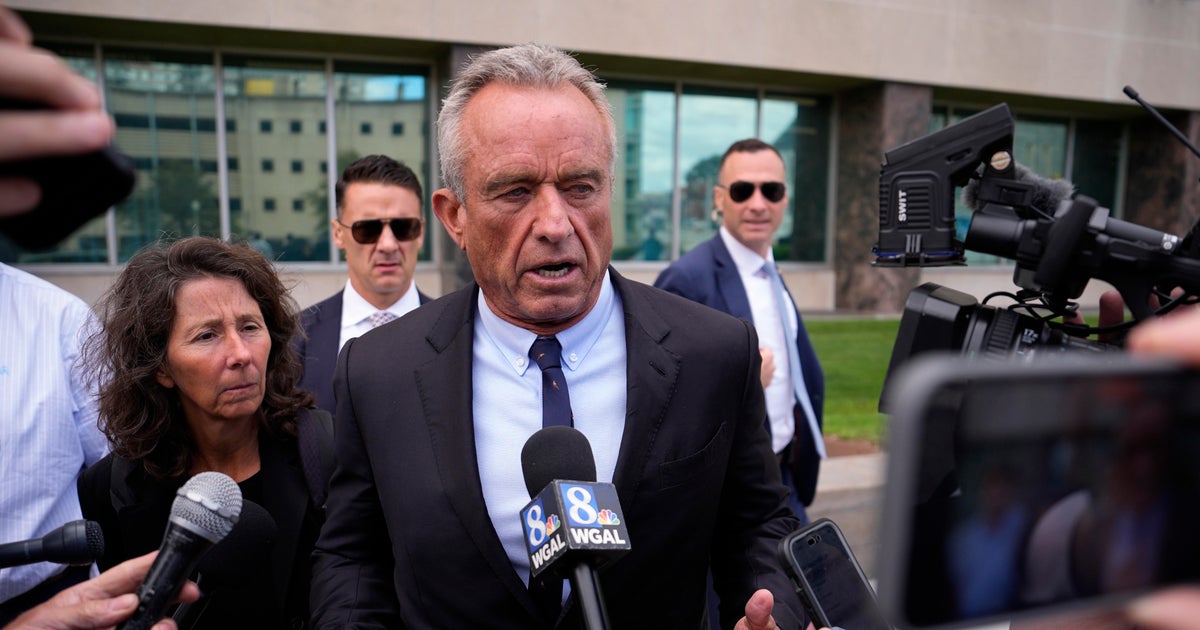D.C. police get required history lesson to address racial bias
Law enforcement officials across the country now acknowledge the link between black history and the current divide between police and community. A recent survey found 83 percent of people subjected to "stop and frisk" in Washington, D.C. are black, though African-Americans make up 47 percent of the population in the nation's capital.
And that is why D.C.'s police now mandate new training to address racial bias. It includes a tour of the National Museum of African-American History and Culture. The tour compels officers to explore black history in America in order to help reduce the tension between police and the community.
Bernard Demczuk has led hundreds of police officers on tours through historically black neighborhoods in the center of D.C., known as Shaw and U Street. "What I want to do is introduce why Washington, D.C., is known as the 'black Mecca of America,'" he said. "Murals tell our history – we don't want to hide our history behind closed doors."
Demczuk says those neighborhoods have a history of oppression at the hands of a police force that was majority white.
Racial tensions caused riots in this neighborhood when Dr. Martin Luther King Jr. was assassinated. "The first brick went through a store that would not hire African-Americans," Demczuk said.
Fires set by the rioters burned blocks of buildings to the ground.
Fifty years later, the resentment still simmers. "It's a tension; be conscious of it," he said.
Over the past year, Metropolitan Police have seen a 36-percent rise in use of force incidents. In 2016 D.C. police were involved in the deadly shooting of Terrence Sterling, an unarmed black man, which led to protests. In another high-profile case, an officer was photographed wearing a shirt with racist imagery.
Officers Regenna Greer, Melvin Evans and Sarah Snapko say police feel that tension when they walk the beat.
"I was called names, and it was very uncomfortable, it was different," Snapko said. "And I couldn't understand why there was that conflict. And this is one of the reasons why this training is such a benefit."
Officer Snapko worked in the Shaw neighborhood. "Just knowing the history, the background, I hope that reverberates with the community, that they realize we want to know."
All three are trainers at the police academy and have taken the tour.
Correspondent Jeff Pegues asked, "Learning this type of information and going out onto the beat, do you think that lowers the temperature level, it makes everyone feel a little bit more at ease?"
"I really believe that it does," Greer replied.
Evans said, "When you look at past history, you don't want to repeat the same mistakes again. When you look at mistakes in law enforcement, you say, 'No, we don't want to go there as a department.'"
D.C. Mayor Muriel Bowser joined Police Chief Peter Newsham to implement the new training. "The chief can't do his job effectively if the community doesn't trust him and his officers," Bowser said.
Chief Newsham saw the National Museum of African-American History and Culture as a learning opportunity for officers who did not learn about African-American history in school. He told the officers, "Hopefully you will get out of this training what I got out of going to this museum. It's an experience like no other experience.
"We're not teaching our kids across the country about what happened to African-Americans in this country, and I think a lot of us are missing something."
Lessons he hopes they have learned now. "I think importantly, it's for our officers to understand how some folks in our community feel about how the police played a role in some of the injustices that we have in our society."
Officer Evans says the training will make a difference: "The only way you make a bridge or build that bridge of getting along is allowing people to know that I know about you. I have something that I can talk to you about. I understand what you went through. I understand your concerns. You learn from your community and the community learns from you. And at the end of the day they really know that you're here to aid and assist them."
This is the first program in the country that is required for an entire police force, but cities have started offering courses like it in Chicago and Philadelphia. They hope this class will catch on in more cities.





